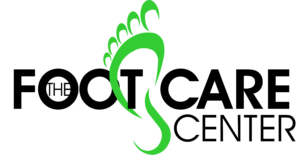Table of Contents
Introduction
Pain in your feet is more than a pain in the neck when you’re an athlete. Unless you’re an aerialist who works above the ground with hoops and swings, your feet are the starting point of your game or sport.
Without a stable, pain-free, and efficient base provided by healthy feet, the rest of your body can’t work efficiently. Unfortunately, foot injuries are common in athletes, particularly if you run cross-country, play soccer, or are a gymnast.
The five most common foot injuries among athletes are:
- Foot or toe contusions
- Midfoot injuries
- Plantar fascia injuries
- Turf toe
- Metatarsal fractures
Feet, though, tend to be a neglected body part when it comes to regular self-care. Unless you get pedicures, you may not think of your feet at all, except when you have a blister or corn to attend to, or if you’re bandaging a sore toe or ankle.
At Advanced Foot & Ankle Center, our board-certified podiatrists know how essential healthy, aligned feet are, especially for athletes. At our offices throughout Utah, we help you keep your feet and body safe and optimized with gait analysis, pronation treatment, and other therapies.
You can help keep your feet stable and pain-free, too. Following are simple self-care rules and tips to keep your feet as strong and optimized as the rest of your body.
Wash and dry your feet daily
If you’re an athlete, you put your feet through the grinder every day. Make sure you wash your feet thoroughly, including between the toes, and scrub the soles of your feet to remove grime and grit that otherwise might cause irritation and lead to corns or calluses.
Just as important as washing is drying. Be sure to pat off all moisture from your feet. Again, focusing on between your toes is important. Wet feet provide a breeding ground for fungi, such as those that cause athlete’s foot.
Cut nails straight across
Find the right shoes and socks
Socks help cut down the friction between your foot and your athletic footwear. This minimizes the risk of developing blisters as you run. Socks also protect your toenails from the constant rubbing against the inside of shoes.
Choose thin socks with moisture-wicking capabilities to keep your feet dry. Merino wool, bamboo, and some synthetics keep moisture away from your feet and let them breathe. Cotton socks absorb moisture instead of wicking it, which increases the risk of blisters.
Be sure your athletic shoes fit perfectly for your sport, too. Your foot should be cradled and supported. You can use your normal shoe size as a guide to choose which size to try, but don’t expect the numbers to coincide; athletic shoe size numbering depends on brand and country of origin.
Make sure you have about a thumb’s width of space between your big toe and the toe of the shoe. Your foot needs room to expand when it strikes the ground, and also room to move forward due to the momentum of your gait.
The heel should be tight. This helps keep your foot stable and prevents it from sliding around in your shoe, raising the risk of blisters.
Get a gait analysis
If you depend on your feet to play your sport, make sure your feet are optimally aligned and that you’re not over- or under-pronating or are otherwise using inefficient movements that put your body at risk.
When we perform gait analysis, we examine parameters such as:
- Gait velocity
- Stride length
- Step length
- Stance phases
- Swing phases
- Cadence
- Single support
- Double support
If we detect inefficiencies in your gait, we may recommend physical therapy that strengthens areas of weakness and creates more balance in your movements. We may also recommend orthotics to keep your feet stable, cradled, and perfectly aligned in your shoes.
Use orthotics to maximize performance
Orthotics aren’t just for older people with foot pain. You may benefit from orthotics that ensure your feet are perfectly aligned. Orthotics stop you from engaging in unhealthy pronations or other suboptimal movements that endanger your feet, ankles, knees, and hips.
Orthotics can even increase your speed. Runners with customized orthotics reported significantly higher running speeds when compared with runners who didn’t use them.
And, of course, if you do experience foot pain, contact us right away. The earlier we diagnose and treat your problem, the faster you can safely get back to your sport.
Conclusion
Do you need a gait analysis or help with foot pain or athlete’s foot? Call our expert team at the office nearest you or book your appointment online today.
Contact us today to schedule an appointment.
Looking to schedule an appointment with a physician?
Schedule an appointment with us by calling us today or by clicking the button below to begin requesting your appointment today!
